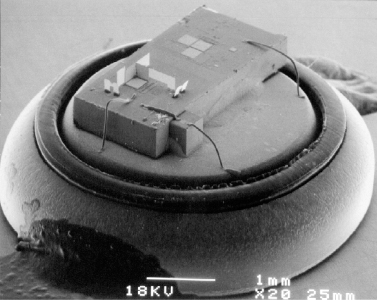NANO-ENABLED POWER SOURCES
ENOCH WANG
Intelligence Community, Washington, D.C.
DANIEL H. DOUGHTY
SION Power Corp, Tucson, Arizona
1 SCIENTIFIC OVERVIEW
As with portable consumer electronics, there is an insatiable demand for more power in most military applications. The exponential growth in integrated circuit performance over the past 30 years, as predicted by the Moore's law, accelerated the demand for power in many consumer electronics and military devices. Unfortunately, the pace of development of electrochemical cells or other power sources cannot keep up with the exponential growth of the integrated circuit and has become a limiting technology for electronic microdevices such as miniaturized communication devices (Fig. 1). Although the number of transistors per integrated circuit has been doubled every couple of years since 1970, the performance gain per year for commercial cells is usually a small percentage, depending on the cell chemistry. Battery technology performance has increased about 2% per year. The newer lithium-ion (Li-ion) rechargeable chemistry performance gain in terms of capacity has been about 12% per year since the introduction in 1991, but still has not kept pace with demand. Thus, the accelerating growth in the digital devices has often been limited by the incremental improvement in battery performance.

FIGURE 1 Photograph of a sensor “mote” (only 2 mm ...
Get Wiley Handbook of Science and Technology for Homeland Security, 4 Volume Set now with the O’Reilly learning platform.
O’Reilly members experience books, live events, courses curated by job role, and more from O’Reilly and nearly 200 top publishers.

